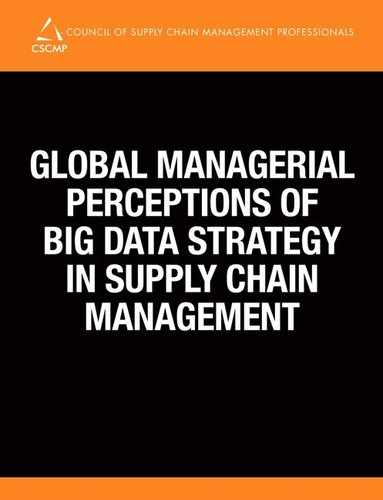Key Takeaways
We developed four specific takeaways: (1) the lack of a united definition for Big Data used in supply chains, (2) the nuances of sharing this data, (3) the opportunities for Big Data in Supply Chains, and (4) the challenges or obstacles that remain.
First, there is no united international definition or understanding of Big Data. We noted not only disagreements across countries, but within countries. Some managers talk about point-of-sale information dumps (customer, business, and industry touch points), while others talk exclusively about engineering discovery within the supply chain, while yet others talk about Google searches and web crawlers. Our understanding of Big Data focuses on managing and storing a high volume of multilevel data that is automatically generated in real time and can be data mined to assist with forecasting and managerial decision making. Specifically, we characterize Big Data within the supply chain as relationship-based information unique to business because of its volume, velocity, variety, and veracity.
Second, data sharing exists somewhere between operational minimums and not at all. After years of requests from business professionals, the research community has yet to inform industry on how to share data efficiently and effectively. Questions remain unanswered, such as: What should and should not be shared? When to share what? What is legal or not? Transparent sharing and the related safeguarding of data is an important concern and largely dependent not only upon the company, but the relationship network and country of origin.
Next, Big Data’s value is less in its huge size and more in its ability to help supply chain managers take advantage of existing information in order to make meaningful decisions and more accurate predictions for firms and their partners. Opportunities currently appear to be focused on process improvement and logistical cost reduction with a future on finding strategic uses. Managers agree that Big Data provides an opportunity for some level of improvement and nearly all seem ready to move forward with a Big Data strategy. The key for many managers seems to involve integrating Big Data systems and developing tools to more efficiently organize and analyze the data. It seems companies believe Big Data will determine firms’ future viability and relevance.
Finally, tremendous challenges exist within and across companies and countries. What to share is a big issue and, because of the consumer connections to operational data, all business levels are affected. Top management is again asking for a return on investment, but the field cannot seem to predict a superior ROI. Big Data proponents are talking about greater predictive forecasting and management, but cost-benefit analyses have yet to determine if implementing strategic Big Data programs are valuable for all firms. This is intensified by the fact that different supply chain partners have diverse resources and capabilities for handling Big Data.
In addition to asking about Big Data usage now, firms are also questioning future Big Data usage. The challenge of developing and/or implementing integrated systems and Big Data compatible infrastructure are at the forefront of many managers’ minds, alongside concerns over transparency, determining “one version of the truth,” and hiring capable data scientists with both the analytical and technical skills to manage Big Data. Finally, the data itself may be distrusted as these databases can potentially be manipulated either by mistake or on purpose. Examples include altering data based on analysis needs, miscalculations or mistakes during entry, and risk of exposing weaknesses, misinterpretation of unstructured data, etc.
Going forward, myriad options exist for future research regarding Big Data across supply chain partnerships. Specifically, using a qualitative, native categories approach allowed us to avoid leading questions and conduct in-depth analyses with managers who deal directly with Big Data. However, quantitative studies may be conducted in order to confirm our findings and obtain a broader consensus on the definition, uses, challenges, and opportunities of implementing a Big Data strategy.
